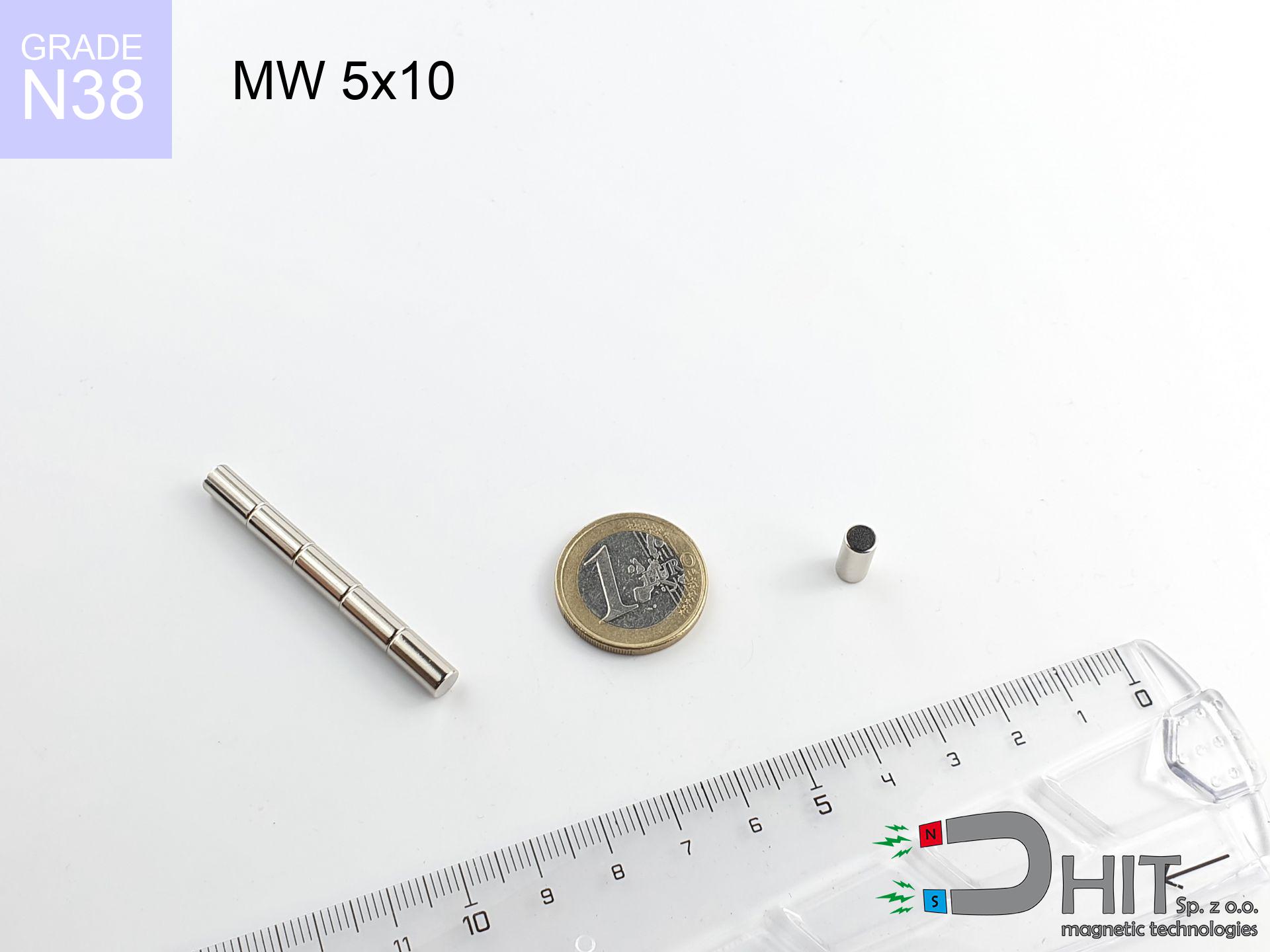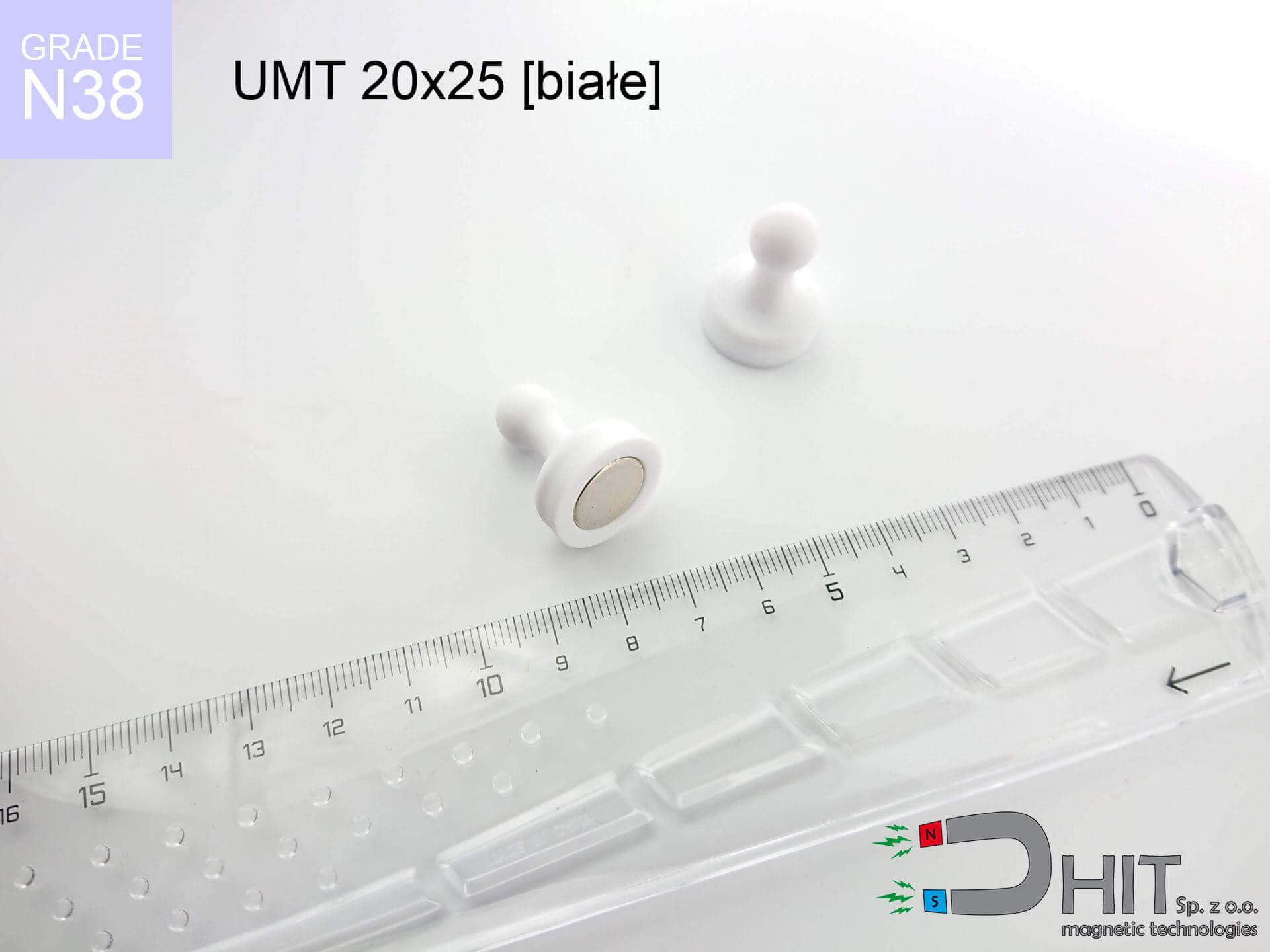SM 32x350 [2xM8] / N52 - magnetic separator
magnetic separator
Catalog no 130461
GTIN/EAN: 5906301813323
Diameter Ø
32 mm [±1 mm]
Height
350 mm [±1 mm]
Weight
1940 g
Magnetic Flux
~ 10 000 Gauss [±5%]
1119.30 ZŁ with VAT / pcs + price for transport
910.00 ZŁ net + 23% VAT / pcs
bulk discounts:
Need more?
Give us a call
+48 22 499 98 98
or send us a note using
our online form
the contact form page.
Specifications as well as appearance of a neodymium magnet can be calculated using our
magnetic mass calculator.
Same-day processing for orders placed before 14:00.
Physical properties - SM 32x350 [2xM8] / N52 - magnetic separator
Specification / characteristics - SM 32x350 [2xM8] / N52 - magnetic separator
| properties | values |
|---|---|
| Cat. no. | 130461 |
| GTIN/EAN | 5906301813323 |
| Production/Distribution | Dhit sp. z o.o. |
| Country of origin | Poland / China / Germany |
| Customs code | 85059029 |
| Diameter Ø | 32 mm [±1 mm] |
| Height | 350 mm [±1 mm] |
| Weight | 1940 g |
| Material Type | Stainless steel AISI 304 / A2 |
| Magnetic Flux | ~ 10 000 Gauss [±5%] |
| Size/Mount Quantity | 2xM8 |
| Polarity | circumferential - 13 poles |
| Casing Tube Thickness | 1 mm |
| Manufacturing Tolerance | ±1 mm |
Magnetic properties of material N52
| properties | values | units |
|---|---|---|
| remenance Br [min. - max.] ? | 14.2-14.7 | kGs |
| remenance Br [min. - max.] ? | 1420-1470 | mT |
| coercivity bHc ? | 10.8-12.5 | kOe |
| coercivity bHc ? | 860-995 | kA/m |
| actual internal force iHc | ≥ 12 | kOe |
| actual internal force iHc | ≥ 955 | kA/m |
| energy density [min. - max.] ? | 48-53 | BH max MGOe |
| energy density [min. - max.] ? | 380-422 | BH max KJ/m |
| max. temperature ? | ≤ 80 | °C |
Physical properties of sintered neodymium magnets Nd2Fe14B at 20°C
| properties | values | units |
|---|---|---|
| Vickers hardness | ≥550 | Hv |
| Density | ≥7.4 | g/cm3 |
| Curie Temperature TC | 312 - 380 | °C |
| Curie Temperature TF | 593 - 716 | °F |
| Specific resistance | 150 | μΩ⋅cm |
| Bending strength | 250 | MPa |
| Compressive strength | 1000~1100 | MPa |
| Thermal expansion parallel (∥) to orientation (M) | (3-4) x 10-6 | °C-1 |
| Thermal expansion perpendicular (⊥) to orientation (M) | -(1-3) x 10-6 | °C-1 |
| Young's modulus | 1.7 x 104 | kg/mm² |
Material specification
| iron (Fe) | 64% – 68% |
| neodymium (Nd) | 29% – 32% |
| boron (B) | 1.1% – 1.2% |
| dysprosium (Dy) | 0.5% – 2.0% |
| coating (Ni-Cu-Ni) | < 0.05% |
Ecology and recycling (GPSR)
| recyclability (EoL) | 100% |
| recycled raw materials | ~10% (pre-cons) |
| carbon footprint | low / zredukowany |
| waste code (EWC) | 16 02 16 |
View also proposals
Pros and cons of neodymium magnets.
Pros
- Their strength remains stable, and after approximately 10 years it drops only by ~1% (according to research),
- They show high resistance to demagnetization induced by external field influence,
- The use of an elegant finish of noble metals (nickel, gold, silver) causes the element to present itself better,
- The surface of neodymium magnets generates a powerful magnetic field – this is a key feature,
- Through (appropriate) combination of ingredients, they can achieve high thermal resistance, allowing for functioning at temperatures reaching 230°C and above...
- In view of the possibility of free shaping and customization to specialized requirements, NdFeB magnets can be created in a broad palette of geometric configurations, which increases their versatility,
- Universal use in innovative solutions – they serve a role in magnetic memories, drive modules, medical equipment, as well as multitasking production systems.
- Compactness – despite small sizes they offer powerful magnetic field, making them ideal for precision applications
Weaknesses
- To avoid cracks upon strong impacts, we recommend using special steel housings. Such a solution secures the magnet and simultaneously increases its durability.
- Neodymium magnets lose force when exposed to high temperatures. After reaching 80°C, many of them experience permanent drop of strength (a factor is the shape and dimensions of the magnet). We offer magnets specially adapted to work at temperatures up to 230°C marked [AH], which are very resistant to heat
- When exposed to humidity, magnets start to rust. To use them in conditions outside, it is recommended to use protective magnets, such as magnets in rubber or plastics, which prevent oxidation and corrosion.
- We suggest cover - magnetic holder, due to difficulties in producing nuts inside the magnet and complex forms.
- Potential hazard related to microscopic parts of magnets can be dangerous, in case of ingestion, which is particularly important in the context of child health protection. It is also worth noting that tiny parts of these magnets are able to disrupt the diagnostic process medical when they are in the body.
- Due to neodymium price, their price is relatively high,
Lifting parameters
Best holding force of the magnet in ideal parameters – what it depends on?
- with the application of a sheet made of low-carbon steel, guaranteeing maximum field concentration
- possessing a thickness of min. 10 mm to avoid saturation
- with a plane perfectly flat
- without any clearance between the magnet and steel
- under vertical force vector (90-degree angle)
- at room temperature
Determinants of practical lifting force of a magnet
- Clearance – the presence of any layer (paint, tape, gap) interrupts the magnetic circuit, which reduces power steeply (even by 50% at 0.5 mm).
- Angle of force application – maximum parameter is available only during perpendicular pulling. The resistance to sliding of the magnet along the plate is typically many times smaller (approx. 1/5 of the lifting capacity).
- Element thickness – for full efficiency, the steel must be sufficiently thick. Thin sheet limits the attraction force (the magnet "punches through" it).
- Metal type – not every steel reacts the same. High carbon content worsen the interaction with the magnet.
- Surface finish – ideal contact is possible only on polished steel. Any scratches and bumps reduce the real contact area, weakening the magnet.
- Thermal environment – heating the magnet causes a temporary drop of induction. It is worth remembering the maximum operating temperature for a given model.
Lifting capacity testing was conducted on a smooth plate of optimal thickness, under perpendicular forces, in contrast under shearing force the holding force is lower. In addition, even a small distance between the magnet and the plate reduces the holding force.
Warnings
Maximum temperature
Keep cool. Neodymium magnets are susceptible to temperature. If you need operation above 80°C, ask us about special high-temperature series (H, SH, UH).
Pacemakers
Individuals with a heart stimulator should keep an large gap from magnets. The magnetic field can interfere with the operation of the life-saving device.
Finger safety
Big blocks can smash fingers in a fraction of a second. Never put your hand betwixt two attracting surfaces.
Dust is flammable
Dust generated during machining of magnets is self-igniting. Avoid drilling into magnets without proper cooling and knowledge.
Danger to the youngest
Neodymium magnets are not suitable for play. Swallowing several magnets can lead to them attracting across intestines, which constitutes a direct threat to life and necessitates immediate surgery.
Precision electronics
Note: neodymium magnets generate a field that interferes with precision electronics. Maintain a safe distance from your phone, device, and navigation systems.
Threat to electronics
Avoid bringing magnets near a purse, computer, or TV. The magnetic field can destroy these devices and wipe information from cards.
Nickel allergy
Medical facts indicate that nickel (standard magnet coating) is a potent allergen. If you have an allergy, prevent direct skin contact and choose versions in plastic housing.
Beware of splinters
Protect your eyes. Magnets can explode upon uncontrolled impact, ejecting sharp fragments into the air. Eye protection is mandatory.
Safe operation
Before starting, check safety instructions. Sudden snapping can destroy the magnet or injure your hand. Think ahead.

![Magnetic bar SM 32x350 [2xM8] / N52 Magnetic bar SM 32x350 [2xM8] / N52](https://cdn3.dhit.pl/graphics/banners/magnet.webp)
![SM 32x350 [2xM8] / N52 - magnetic separator](https://cdn3.dhit.pl/graphics/products/sm-32x350-2xm8-fag.jpg)





